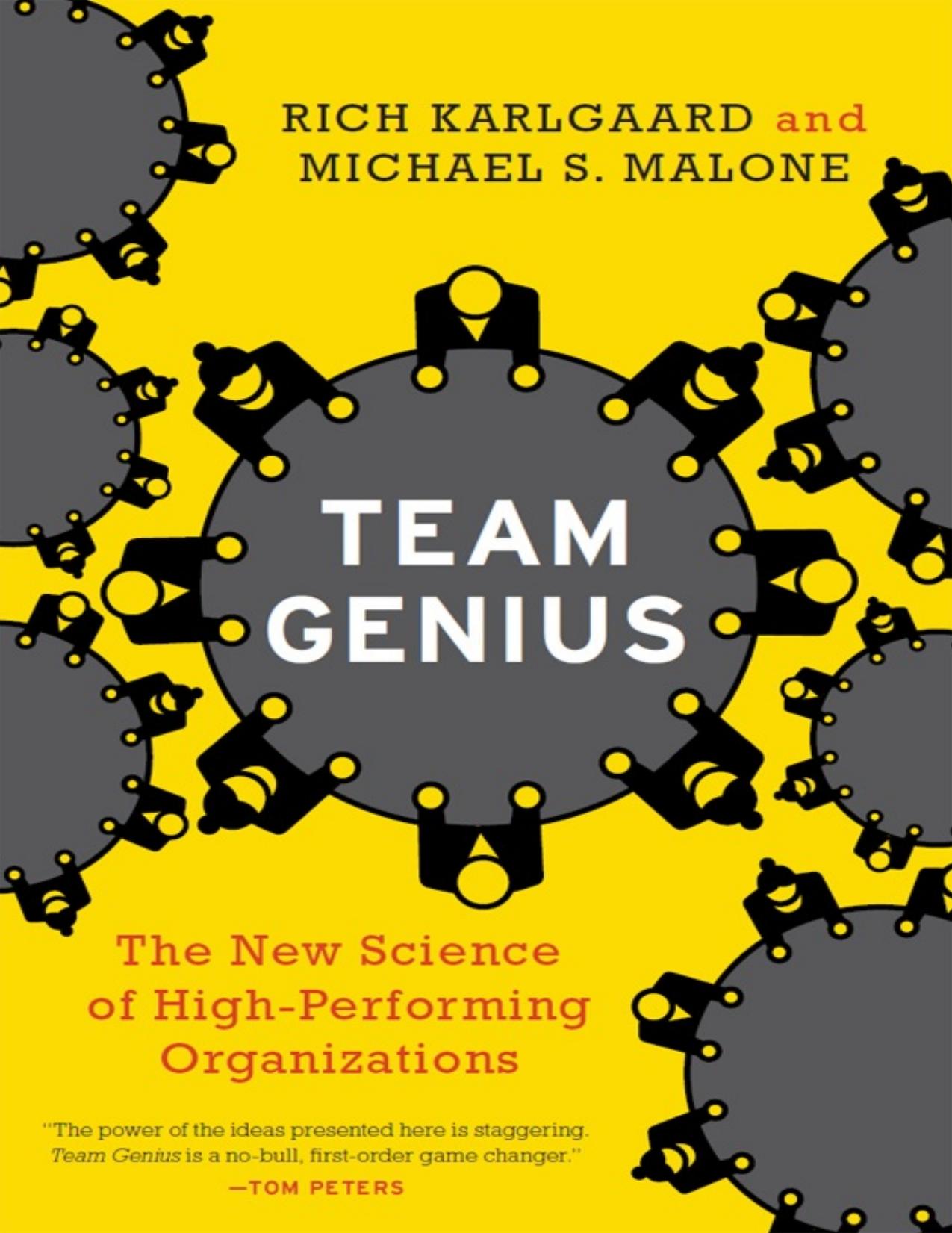
Team Genius
The New Science of High-Performing Organizations
کتاب های مرتبط
- اطلاعات
- نقد و بررسی
- دیدگاه کاربران
نقد و بررسی

May 1, 2015
An exploration of the importance of teams in human activity. Drawing from a broadly based foundation in multiple branches of scientific and academic research, as well as technology and business studies, Forbes magazine publisher Karlgaard (The Soft Edge: Where Great Companies Find Lasting Success, 2014, etc.) and technology writer Malone (The Intel Trinity: How Robert Noyce, Gordon Moore, and Andy Grove Built the World's Most Important Company, 2014, etc.) assemble their case for the imperative of cooperative teamwork. Along the way, they debunk traditional ideas of business success as attributable to either of "two antipodes," the "lone hero and the giant enterprise." The authors focus on teams and the way technological networking effects compound the continual cheapening of overall cost. In the digital world, people are the limiting boundary to an organization's ability to adapt to change. Karlgaard and Malone draw from anthropology, ethnography, history, psychology, and evolutionary microbiology to show that, rather than competition, "cooperation may be the default tendency in human beings." They present research supporting the notion that the evolutionary requirements for clustering demand coordination, communication, and achievement of an optimal size. Teams, they suggest, consistently outperform, and are more likely to come up with new ideas, solitary inventors. Within teams, bringing together people with different perspectives, skills, and experience will tend to improve the performance of the team. As the authors note, "diverse teams need to be actively managed," and they consider how large-scale enterprises are actually hierarchies of teams. The key to their success often lies in finding the appropriate size, whether pairs, trios, or larger clusters. "The teams in which we work, and the teams we lead, may not change the world," write the authors. "But they can...make our company...more successful and secure, and give ourselves and our teammates a more rewarding and fulfilling career." An intriguing counter to the excesses of both individualism and organizations.
COPYRIGHT(2015) Kirkus Reviews, ALL RIGHTS RESERVED.

June 1, 2015
Karlgaard (publisher, Forbes magazine; Life 2.0) and technology author Malone (Bill & Dave) could be a top-flight writing duo. Their research-based fundamentals on team management, historical examples, and personal narratives are sound. The value of teams is a given; however, neither the explication of anthropological, social, and biological bases of teams, from mating pairs to legendary musicians, sports stars, and military commanders, nor the extensive taxonomy of team types will be as useful for would-be managers of high-performance groups as practical advice would have been. Leaders need concrete suggestions of how to create the ideal team for a given task from the ranks of available employees. VERDICT Gems of insight and wisdom are offered here, such as the need for balance between creative and analytical skills to maintain a team's forward momentum, but not all readers will persevere to find and employ them. For fans of business history and theory.--Elizabeth Wood, Bowling Green State Univ. Libs., OH
Copyright 2015 Library Journal, LLC Used with permission.

June 1, 2015
Karlgaard and Malonejournalists, analysts, and private investorsexplore the topic of teams, using cutting-edge scientific research, interviews worldwide with successful team leaders and teams, and case studies. The authors explain how to staff and manage for diversity and to consider team size ( groups of 7 plus or minus 2, 150, and 1,500 are magic sizes for teams ); also, teams of two people produce many of the most successful results. Karlgaard and Malone present 20 questions we should be answering about the teams we manage and those to which we belong, including: Is our organization (major corporations, nonprofits, and government) and its teams capable of meeting the challenges of a highly competitive global economy (a tech-driven, rapidly changing global marketplace with two billion more people entering the workforce)? Can we find the right team at the right moment, and then act quickly when one team needs to be dissolved and replaced with a very different one? This book offers valuable insights for twenty-first-century management.(Reprinted with permission of Booklist, copyright 2015, American Library Association.)

























دیدگاه کاربران